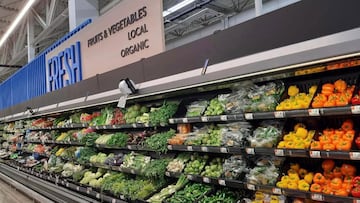The federal benefit program that less than half of seniors eligible for take advantage of
There is a federal program that sends millions of payments a month, yet only 44 percent of eligible seniors are enrolled.


As inflation sent grocery prices soaring, the Senior Citizens League, an organization that advocates for the rights of older Americans, said that a third of seniors “had to visit a food pantry or apply for SNAP benefits, or food stamps, to put dinner on the table” based on a survey they conducted. According to the US Department of Agriculture (USDA), 18 percent of SNAP beneficiaries are ‘elderly adults’, and 44 percent of ‘single-person SNAP households’ are represented by older beneficiaries.
With Social Security being the only form of income for forty percent of retirees, inflation can quickly cut into the purchasing power of seniors to levels that force them to fill gaps. Additionally, when one considers that more than a third of Social Security beneficiaries receive a check worth less than $1,500, the need to bolster one’s income can become essential to affording groceries, housing, and healthcare.
Earlier this month, the National Council on Aging reported that in 2022, only 44 percent of seniors eligible for SNAP benefits participated in the program. California, the country’s most populous state, saw only 19 percent of eligible seniors enrolled in SNAP. With inflation putting pressure on seniors’ finances, enrollment may have increased recently.
SNAP income requirements and Social Security benefits
The Social Security Adminstration publishes annual data on the distribution of the value of benefits across states. In most states in 2023, a household of one had to have an income under $1,215 to qualify for SNAP benefits. If we were to assume that beneficiaries who received less than this amount had no other form of income besides Social Security in 2023, eligibility would look something like this.
- Alabama: 23.3%
- Alaska: 43.8
- Arizona: 22.2
- Arkansas: 24.7
- California: 30.3
- Colorado: 24.6
- Connecticut: 18.3
- Delaware: 16.2
- District of Columbia: 33.9
- Florida: 24.9
- Georgia: 25
- Hawaii: 24.9
- Idaho: 23.4
- Illinois: 23.9
- Indiana: 18.9
- Iowa: 19.5
- Kansas: 18.8
- Kentucky: 26
- Louisiana: 32.2
- Maine: 27.2
- Maryland: 21
- Massachusetts: 24.6
- Michigan: 19.1
- Minnesota: 18.2
- Mississippi: 26.9
- Missouri: 23.3
- Montana: 25.4
- Nebraska: 20.1
- Nevada: 27
- New Hampshire: 16.7
- New Jersey: 19.1
- New Mexico: 28.5
- New York: 23.9
- North Carolina: 20.8
- North Dakota: 22.5
- Ohio: 25.7
- Oklahoma: 23.6
- Oregon: 22.7
- Pennsylvania: 19.4
- Rhode Island: 21.6
- South Carolina: 20.7
- South Dakota: 22.5
- Tennessee: 22.3
- Texas: 28.3
- Utah: 22.2
- Vermont: 19.9
- Virginia: 21.4
- Washington: 20.4
- West Virginia: 23
- Wisconsin: 18.2
- Wyoming: 20.7
Related stories
In other words, the box above shows the percent of retired workers receiving Social Security benefits that would have qualifed for SNAP, had there not been another source of income, either from their own savings or from another memebr of the household. This data shows that nationally more than one in five retired workers, representing around 9.7 million people would have been eligible for SNAP. This figure is most likley an overshoot because it assumes that all retirees live alone, and thus do not have additional income coming in from a spouse, partner, or family member. Nevertheless, the cut off to recieve benefits for a household of two is $1,644, meaning their Social Security checks or other income would need to be under this level to recieve SNAP benefits. The US Census Bureau reported that in 2021, 63 percent of seniors living in poverty lived alone, highligting the harsh reality that a single income household faces when it comes to affordability.
In 2025, the income limit for a single household to receive SNAP benefits will $1,255 or $1,632, depending on the state’s cut off limit. For Alaska and Hawaii, the figures are a little higher: $2,038 and $1,443, respecitively. Contact your state’s SNAP adminstrator to see if you qualify.
Complete your personal details to comment